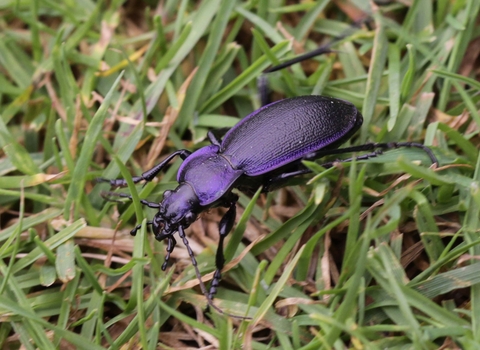
Violet ground beetle (Carabus problematicus) ©Margaret Holland
Violet ground beetle
Violet ground beetles are active predators, coming out at night to hunt slugs and other invertebrates in gardens, woodlands and meadows.
Scientific name
Carabus violaceus or Carabus problematicusWhen to see
March to OctoberSpecies information
Category
Statistics
Length: up to 3cmCommon.
About
There are two very similar species of violet ground beetle. Carabus violaceus is the more common of the two beetles, found in gardens and meadows, and on farmland. Carabus problematicus is slightly less common, favouring woodland and heathland, though it can sometimes be found in gardens.Ground beetles are active, nocturnal predators, chasing and catching smaller invertebrates; they are particularly helpful to gardeners as they prey on many 'pest' species, such as slugs. They can often be found resting during the day under logs and stones and in leaf litter. Adult females lay their eggs in soil and, when the larvae hatch, they become active predators themselves.
